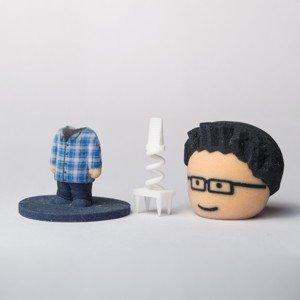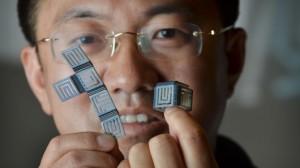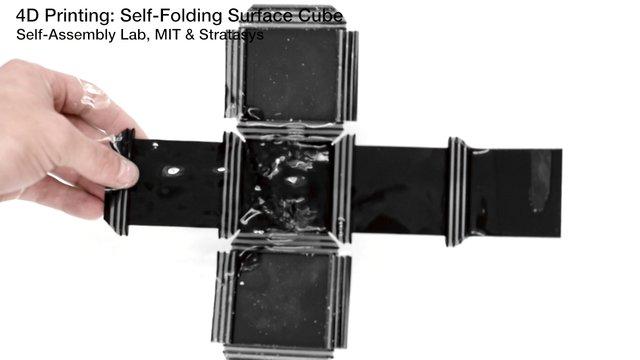We’re only halfway through 2014, and countless new breakthroughs have already hit the headlines. From personalised printing to 4D printers, consumers have suddenly been able to buy a bottle of Coca Cola with their name on it, and order customised 3D printed toys from Amazon. So what do the next few years have in store for us all?
Personalised Printing
Personalisation seems to sell, and it could transform the face of the industry in coming years. The “Share a Coke” campaign, initially launched in June 2013, saw the drink giant print a variety of common forenames onto its Coca-Cola bottles and cans. You could also share a “virtual” glass of the soft drink with a friend via the Coca-Cola website. Consumers have been driven to buy further into the brand by purchasing an iconic glass bottle personalised with their choice of name from the manufacturer’s online store.
The “Share a Coke” campaign, initially launched in June 2013, saw the drink giant print a variety of common forenames onto its Coca-Cola bottles and cans. You could also share a “virtual” glass of the soft drink with a friend via the Coca-Cola website. Consumers have been driven to buy further into the brand by purchasing an iconic glass bottle personalised with their choice of name from the manufacturer’s online store.
It was hoped that the campaign would help fight back against dwindling sales figures. Retails sales of Coca-Cola have fallen 2.1% year–over-year to £667.47m in the 52 weeks up to July 19th in the UK, IRI data has shown. At the same time, smaller rival ,Pepsi has seen sales shoot up by 12.1% in the same period.
Did the campaign work? Sales lifted by 7.8% in the first 12 weeks, and the strategy has been successful in moving the single pack end of the business forward, reported Tim Eales, strategic insight director at IRI.
3D Printing Expands
‘3D Printing’ is a phrase that has regularly passed the lips of tech experts around the world over the past couple of years. It’s a process that has already moved from hi-tech workbenches to the hands of the consumer. Even supermarkets have their fingers in the pie.
UK supermarket ASDA launched a 3D printing programme as part of its Photo Centres in 2013. Permanently running in just a couple of stores – Edinburgh and York – the scheme has seen 3D printers rolled out around the country.  Customers can have themselves scanned in-store, from which an 8” 3D model is created in ceramic. Customers stop by to collect their “mini-me” two weeks later. ASDA has reported that the figurines have proved popular as mementoes, wedding cake toppers and even rewards for drastic weight loss.
Customers can have themselves scanned in-store, from which an 8” 3D model is created in ceramic. Customers stop by to collect their “mini-me” two weeks later. ASDA has reported that the figurines have proved popular as mementoes, wedding cake toppers and even rewards for drastic weight loss.
Earlier this year, Amazon launched the 3D Printed Products Store which currently stocks personalised products such as bobble head dolls, phone covers, jewelry and plastic toys at prices ranging from $40 to $100. In a smart move, the company has partnered with 3D printing companies such as Sculpteo, 3DLT and Mixee Labs. And although the current offerings seem relatively simple, everything can be customised. Could this be the future of retail?
At the moment, possibilities for the future of 3D printing seem endless. While many products will undoubtedly be bespoke and high-end – an entrepreneurial New Zealander is replicating an Aston Martin DB7 for the princely sum of $37,700 – some may influence other industries and the wider world.
3D printed solar panels, for example, are a concept being explored by scientists. The environmentally-friendly material being used – a combination of copper, indium, gallium, selenide – is thin and flexible, similar to cloth, and can be manufactured in any colour and printed in sheets. It’s also cheaper, so that costs can be passed down to homeowners. Scientists say that these solar panels could work better on a cloudy day, could be easier to install, thanks to their low weight and would also be less bulky. Good-looking solar panels here we come?
And American teenager Easton LaChappelle has created 3D printed robotic prosthetics, proudly demonstrating his designs to President Obama at the White House back in 2013. The smart 17-year-old is now working with robotics experts at NASA’s Johnson Space Center to develop and refine the prosthetics. He hopes that they will be able to help amputees around the world who are unable to afford the staggering prices of standard prostheses.
4D Printing Takes Shape
The crossover between 3D and 4D printing is already being recognised. The appealing idea of self-assembling flat pack furniture, for example, is already linking the processes together to create exciting new conceptual products.
 4D printing could be the next big game changer. It was created by Skylar Tibbits, an architect who now directs the Self-Assembly Lab at MIT in close collaboration with 3D printing company Stratasys. Tibbits is currently working with GEOSyntec to design 4D printed water pipes.
4D printing could be the next big game changer. It was created by Skylar Tibbits, an architect who now directs the Self-Assembly Lab at MIT in close collaboration with 3D printing company Stratasys. Tibbits is currently working with GEOSyntec to design 4D printed water pipes.
“Imagine if water pipes could expand or contract to change capacity or change flow rate; or maybe undulate like peristaltics to move the water themselves,” he said. “This isn’t expensive pumps or valves; this is a completely programmable and adaptive pipe on its own.”
The basis of the 4D printing process is clever coding which can create ‘smart objects’ which can self-assemble or rearrange themselves to adapt to their environment and the needs of their user. The code can change an object’s angles, colour, dimensions, and even alter how it will react to water, movement or fluctuations in temperature.
Meanwhile, the U.S. Army Research Office has been investigating the possibilities of this technology. It’s obvious that 4D printing could be incredibly useful to the military for assembling large numbers of parts, vital resources and weapons in response to demand, quickly and en masse. It has been suggested that outcomes of the research could include “pop-up” shelters, camouflaging textiles, or vehicle shields which adapt to the weather conditions to improve performance.
There’s potential for 4D printing to impact a number of industries from construction to athletic wear. The technology could dramatically change the manufacturing processes of many standard products, and could even make it easier to build in extreme environments. Car tires could be printed using 4D printing technology, allowing them to change shape and adapt to wet road conditions before shrinking back to their original form when the road surface is dry.
The possibilities are endless, and we are only starting to realize the potential this technology will have on everything from education to manufacturing, to health care. Discuss the future impacts that 3D printing will have on the world, in the future 3D printing forum thread on 3DPB.com.
This post is a contribution from Shout Digital. Shout Digital is a full service digital agency, headquartered in Newcastle upon Tyne, working for clients including Elanders UK.
Subscribe to Our Email Newsletter
Stay up-to-date on all the latest news from the 3D printing industry and receive information and offers from third party vendors.
You May Also Like
3D Printing Unpeeled: New Arkema Material for HP, Saddle and Macro MEMS
A new Arkema material for MJF is said to reduce costs per part by up to 25% and have an 85% reusability ratio. HP 3D HR PA 12 S has been...
3D Printing News Briefs, January 20, 2024: FDM, LPBF, Underwater 3D Printer, Racing, & More
We’re starting off with a process certification in today’s 3D Printing News Briefs, and then moving on to research about solute trapping, laser powder bed fusion, and then moving on...
3D Printing Webinar and Event Roundup: December 3, 2023
We’ve got plenty of events and webinars coming up for you this week! Quickparts is having a Manufacturing Roadshow, America Makes is holding a Member Town Hall, Stratafest makes two...
Formnext 2023 Day Three: Slam Dunk
I’m high—high on trade show. I’ve met numerous new faces and reconnected with old friends, creating an absolutely wonderful atmosphere. The excitement is palpable over several emerging developments. The high...
































